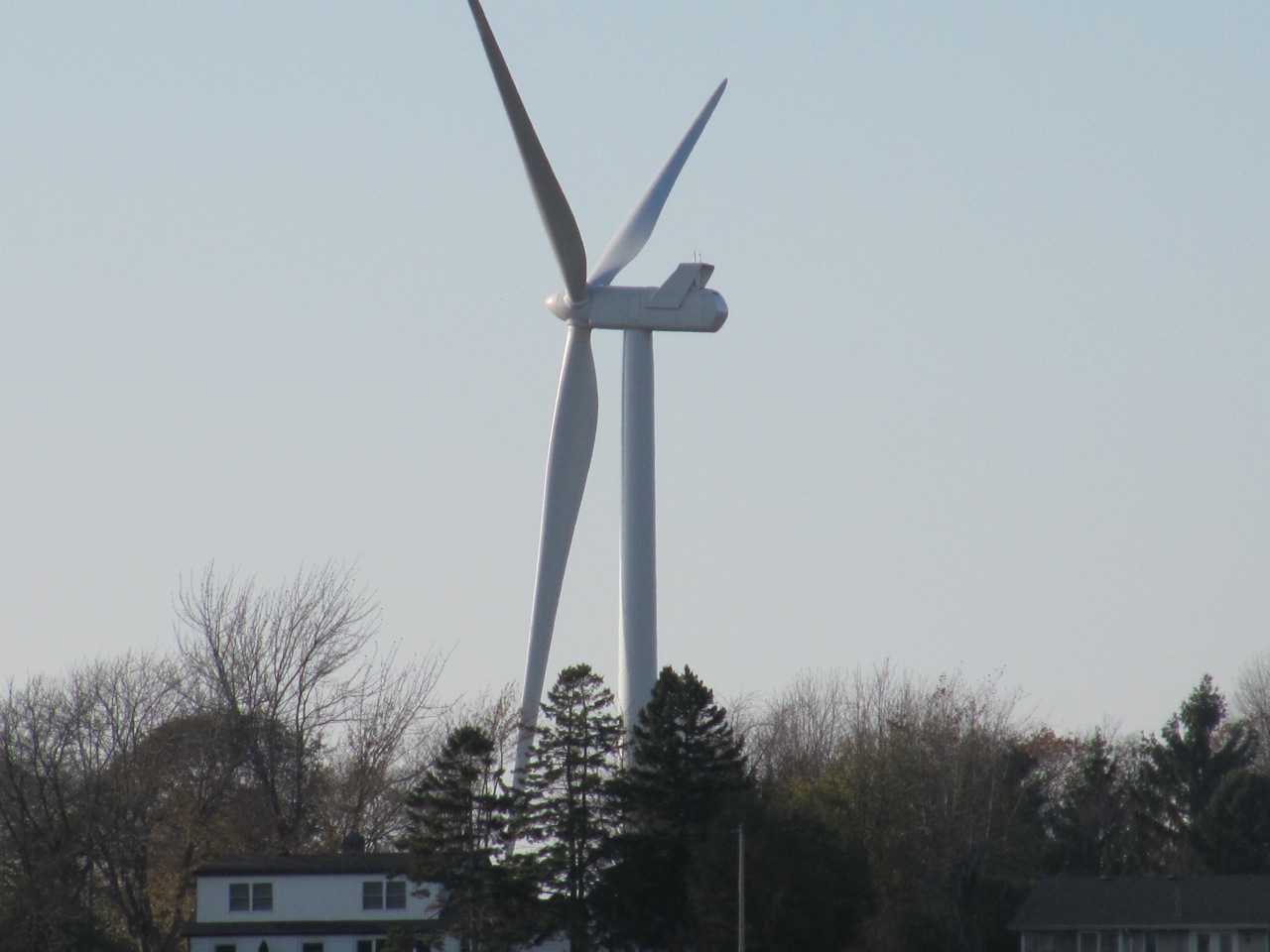
Forbes.com September 23, 2015
A key point of contention against wind (and solar) farms is that they require much larger amounts of land to generate the same amount of electricity, an important downgrade of their “greenness” that goes conveniently ignored. Wind power is naturally intermittent, and plants typically operate at about 25% of full capacity, compared to coal and natural gas plants operating at 90%.
Thus, it can take 4-5 wind plants to produce the same amount of electricity as a single fossil fuel plant.
The U.S. Department of Energy has concluded that generating 20% of electricity (which is likely the highest we could go, see here) with land-based wind installations would demand at least 20,000 square miles, or the size of Maryland and Vermont combined. By comparison, all U.S. nuclear power plants, which produce around 20% of power, occupy only 110 square miles.
One headline is indicative: “Wind farm ‘needs 700 times more land’ than fracking site to produce same energy.”
The main reason industrial wind farms take up so much land is that each turbine can be spaced a half mile or more apart. And bigger, taller, and more spaced apart turbines are better because they can generate more electricity. Standing 650 tall (200 meters), these giant wind turbines dwarf nearby buildings. Along with the complexity of siting, this explains why getting wind farms built is much harder in real life than in the Sierra Club’s mind.
The pervasive “Not in My Backyard” (NIMBY) syndrome indicates that even the most ardent renewable energy supporters in public often don’t want wind farms near their own homes in private (see the wind hypocrisy of this famous family here). Additionally, the wind build-out will require massive amounts of new high-voltage transmission lines because our best wind locations, many of which have already been taken (“the sweet spots get chosen first”), are far from cities.
Perhaps most importantly, wind farms flicker, make noise, cause health problems, and can be “visual intrusions,” so their impact on property values, especially as wind power grows, is increasingly concerning.
The Obama administration is heavily pushing wind power, and the Clean Power Plan could require a more than tripling of wind capacity to 220,000 megawatts by 2030 and a near quadrupling by 2040. The stakes are very high: U.S. housing is already struggling, but remains a whopping $27.5 trillion market.
Reduced property values from wind farms is in stark contrast to the “shale gas revolution,” which has created“thousands of new millionaires” of property owners.
Wind Turbines Dwarf Surrounding Structures

Sources: http://sweetclipart.com/wind-turbine-line-art-1190; http://chenglor55.deviantart.com/art/Football-Field-with-NFL-Hash-Marks-423698654; http://www.dreamstime.com/royalty-free-stock-images-new-two-story-house-garden-image17887469
It surely seems logical enough, anything that would cause a potential buyer to value a property less lowers its value. A piece of property, after all, is just what someone is willing to pay for it. Markets are about supply and demand, and all things being equal, why would somebody choose to buy a home with an industrial wind farm nearby? And simply put, it seems impossible to believe that wind turbines would actually add to a property’s value.
But, there’s a heavily funded public relations machine to make Americans think that wind power doesn’t impact property values, and it’s every bit as influential as the “Big Oil” the anti-fossil fuel movement purports to be so against.
Renewable energy and the “environment” are big businesses (see the Volkswagen emissions scandal for proof) and they include not just energy producing companies but also various agencies, interest groups, and even university researchers. Their grant money and careers are at stake.
…
Read more here



7 Comments
John Vincent
Sounds like some one is waking up to what we’ve been saying here.
Barbara
Google:
The Guardian, UK, Aug.7,2014
“Five Greenpeace campaigns against companies: Lego, Barbie and Shell”
The article includes VW which has had plenty of pressure put on the company.
No direct link to this article at The Guardian.
Greg Latiak
Sadly, no surprise here. Even more so, what will it take to turn Ontario from this course? Don’t see a lot of solar panels in Toronto, no wind turbines (that work, anyhow). Why put this stuff out here and then waste 20% or more of it in transmission costs back to good old, self-serving TO? And then jack up our rates to pay for it? While trashing our homes and the landscapes we love? Clearly the welfare of a much narrower slice of Ontario (hopefully) is at issue — the rest of us are just acceptable collateral damage to these goons. Zimbabwe North, it seems.
Barbara
Bloomberg Business, Sept.21, 2015
‘Merkel’s Climate Crusading Risks Being Blemished by VW scandal’
“German Chancellor Angela Merkel’s lectures on environmental responsibility may ring a little hollow when she heads to New York this weekend.”
http://www.bloomberg.com/news/articles/2015-09-21/merkel-s-climate-crusading-risks-being-blemished-by-vw-scandal
Barbara
Forbes, Sept.24, 2015
‘Will green energy Grow More through Onsite Or Centralized Generation?’
“Although the NIMBY factor is generally pernicious in electricity parochial concerns over regional and national interests, its influences can sometimes be constructive in searching for alternatives, …”
http://www.forbes.com/sites/kensilverstein/2015/09/24/will-green-energy-grow-more-through-onsite-or-centralized-generation/?ss=energy
It’s always the NIMBYs and no concern is raised about birds and bats. The arguments is “for-the-greater-good”. But for who’s good is this? The region the nation?
Barbara
Pernicious: Causing great harm or damage often in a way that is not easily seen or noticed.
http://www.merriam-webster.com/dictionary/pernicious
Barbara
This Forbes article provides quite a paper-trail if the references cited in the article are followed.